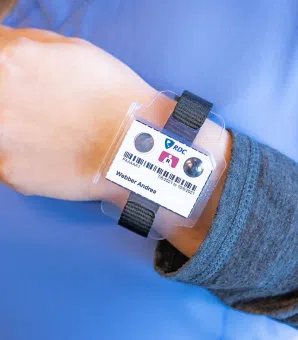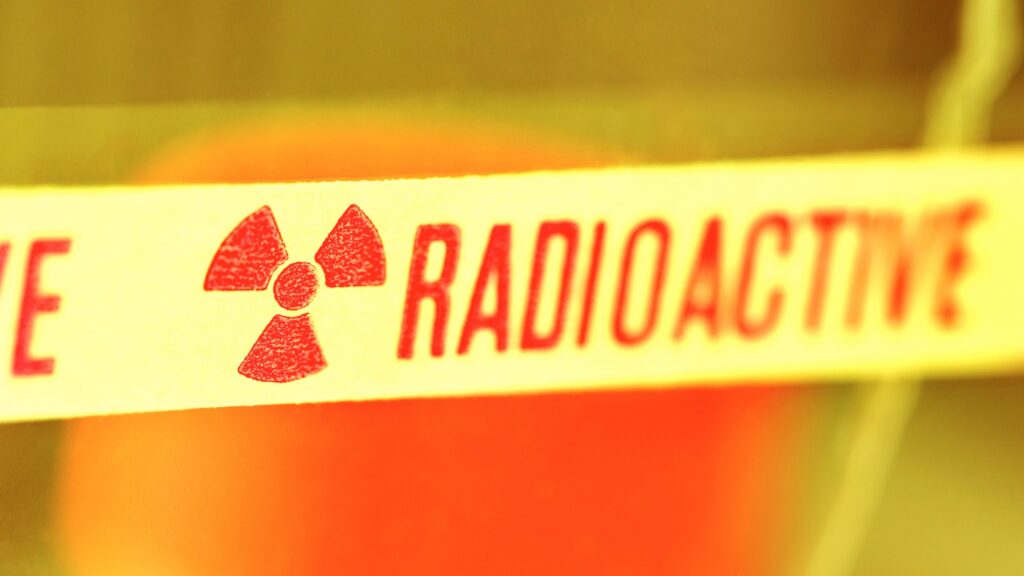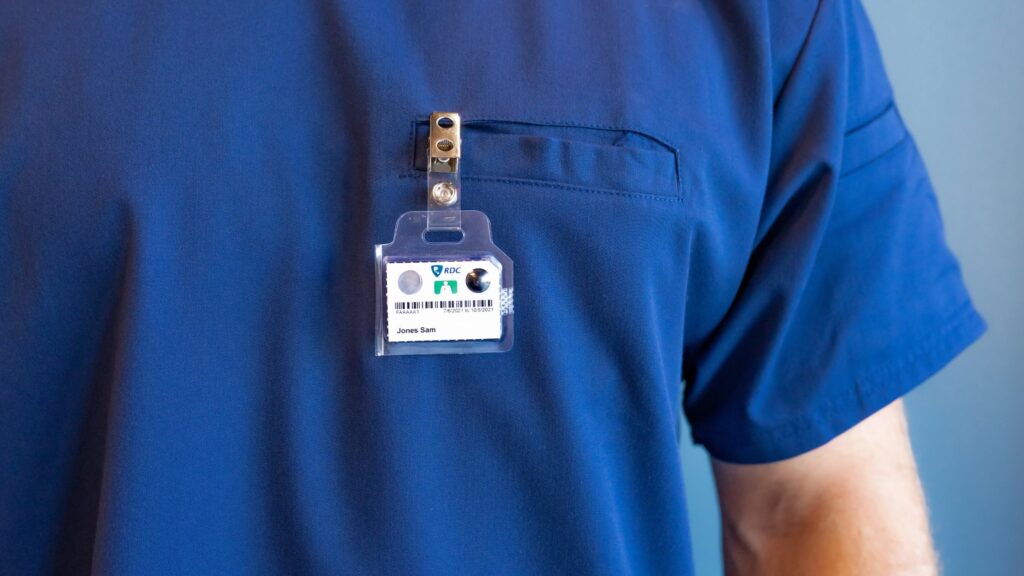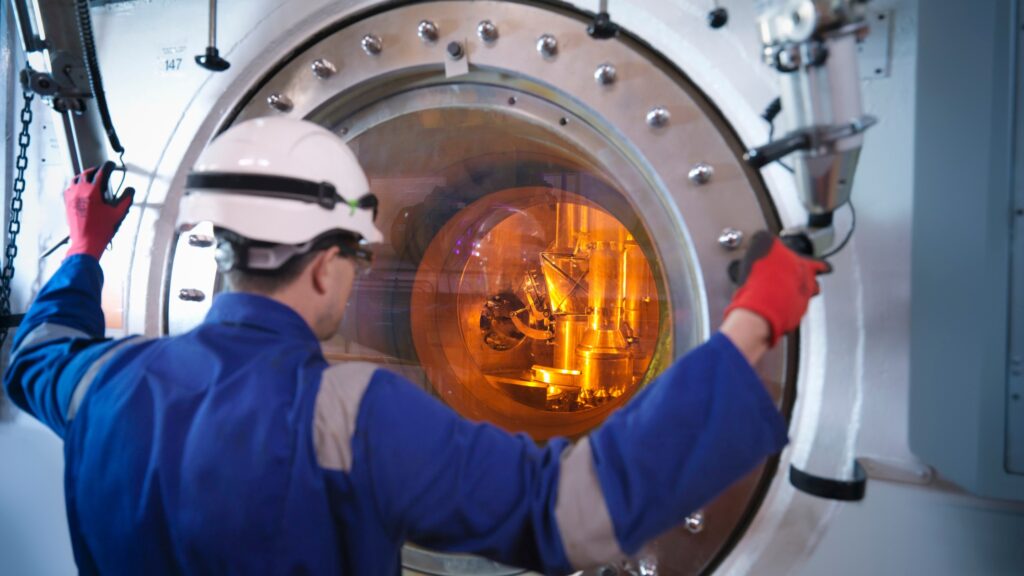
Dosimeter badge services for medical, dental, and veterinary businesses
Learn how Radiation Detection Company’s easy-to-use dosimetry solutions can boost the efficiency of your practice.

President, Radiation Detection Company
Last Updated: September 19, 2024
Learn why passive dosimeters, such as TLD and OSL, and semi-passive digital dosimeters are the best options for long-term radiation monitoring and compliance with regulatory standards in various occupational settings.
Nowadays, many different types of radiation dosimeters are on the market. But what are the differences between them? In this article, we'll explore why passive dosimeters are the best options for radiation detectors and which dosimeter type is most effective for specific settings.
Creating and maintaining an effective radiation safety program is crucial for protecting radiation personnel from ionizing radiation's harmful side effects and maintaining compliance with federal and state regulations.
Organizations use dosimeters to monitor employees' radiation exposure and comply with regulations; a dosimeter result is used as objective evidence to show compliance with dose limits. Before we discuss the different dosimeter types, we want to explain why it's important to measure radiation exposure.

Ionizing radiation has so much energy that it can knock electrons out of atoms (a process known as ionization). Ionizing radiation can originate from cosmic particles (i.e., particles from outer space), X-ray machines, and other radioactive elements.
Too much ionizing radiation can damage DNA and change cell structure. These changes have the potential to cause serious health problems, including an increased risk of developing certain cancers.
Looking for more information on radiation safety? Check out this blog post: Radiation Safety Programs: A Comprehensive Guide
The US Nuclear Regulatory Commission (NRC) has established dose limits for occupational exposure for people working with ionizing radiation (e.g., X-ray imaging equipment) or radioactive materials – the dose limit functions as a form of radiation protection for personnel monitoring.
There are several ways to measure an absorbed dose of ionizing radiation. Those who work with radioactive substances or may be exposed to radiation from radiation-emitting equipment typically carry a passive personal radiation dosimeter – this device records and indicates the cumulative radiation dose received by the individual.
After lab analysis, a passive dosimeter can provide a personal dose equivalent (also known as occupational dose or dose) – this is the dose in tissue at an appropriate depth in the human body.
Digital dosimeters use a battery and store the signal and offer direct readings of doses stored in the device any time. Examples include NetDose™, Instadose, and Verifii. NetDose is a great example of a semi-passive dosimeter, because it accumulates radiation exposure data over time and uses active electronic components for cumulative data storage with easier, more immediate retrieval.
Organizations must provide staff with a passive dosimeter if they are likely to receive an occupational dose that exceeds 10% of the limits outlined by the United States Nuclear Regulatory Commission in Regulation 10 CFR Subpart C § 20.1201. You can read more about the conditions requiring individual monitoring of external and internal occupational dose on the NRC website.
NVLAP, the National Voluntary Laboratory Accreditation Program, accredits dosimetry providers to ensure that they meet high standards of accuracy, reliability, and consistency in measuring and recording radiation exposure. This accreditation process is crucial because it helps protect workers who are exposed to radiation by ensuring that their exposure is accurately tracked and monitored.
There are two common types of dosimeters: active and passive.
Active dosimeters measure instantaneous dose and track all variations of radiation exposure with a direct, real-time visual indication of information, reporting radiation dose and dose rate for the individual wearing the device.
Active dosimeters provide a direct display of the accumulated dose, including other functions such as alarm threshold settings for dose and dose rate values and audible and visual indications of the dose rate level. They require a battery and can be used to supplement passive and semi-passive dosimetry in the case of high radiation levels and/or dose optimization purposes.
Personal radiation detectors – like electronic personal dosimeters (EPD), personal emergency radiation detectors, or a quartz fiber dosimeter – play a major role in active dosimetry.
When it comes to dosimeters, active means real-time; these dosimeters allow continuous monitoring with a direct display and audible alarm warnings at pre-set levels of exposure. Active dosimeters can provide direct readouts of the radiation dose accumulated along with additional functions and alarm threshold settings that may not be necessary for some occupational settings and industries.
Active dosimeters often complement passive and semi-passive dosimetry for high radiation levels or dose optimization. However, this level of real-time measurement may not be necessary, beneficial, or even compliant for organizations responsible for keeping accurate records of how much radiation each employee has been exposed to over a specific period or throughout their employment.
In addition, active dosimeters can be used in situations where NVLAP accreditation is not required, like personal dosimeters used for general public or educational purposes or industries or sectors where radiation exposure does not reach levels that require regulatory oversight. While NVLAP accreditation ensures a high standard of quality, some organizations, such as large institutions or government bodies, may have internal dosimetry programs with their own controls, not requiring NVLAP compliance.
Organizations can also use active dosimeters to study radiation worker dose for ALARA purposes. Active dosimeters can alert workers to high radiation fields or warn them that they’re approaching a pre-established threshold of dose so they can distance themselves from the radiation field, incorporate shielding practices, and limit their exposure time to keep doses as low as reasonably achievable.

Passive dosimeters (e.g., solid state dosimeters like TLD, OSL, and digital dosimeters) do not need an external source of energy to operate, as the dose is stored in the device. Also known as integrating dosimeters, passive dosimeters can estimate the wearer's cumulative dose.
“Passive” doesn’t mean ineffective; passive dosimeters aren’t secondary to active dosimeters. In fact, passive dosimeters are the only type of dosimeter that provides an NRC-required dose of record. Organizations must provide employees with a passive dosimeter – active dosimeters are an optional addition.
Passive dosimeters record the amount of radiation an individual has received over a specific period (e.g., a week, a month, a quarter, or a whole year). They do not provide a direct readout of absorbed dose; the analysis is completed later in a lab. After each wear period, a new badge is issued and used, and the old one is collected to analyze occupational dose.
A semi-passive dosimeter functions similarly to a passive dosimeter by accumulating radiation exposure data over time. For instance, a digital dosimeter can be categorized as a semi-passive dosimeter because it allows periodic data collection over time with easier retrieval using active electronic components like a memory chip or a sensor.
Organizations may prefer semi-passive or passive dosimetry systems in industries requiring radiation monitoring when occupational radiation workers are generally exposed to low levels of radiation (i.e., in hospital settings).
The end goal of cumulative radiation exposure monitoring is to get a legal dose of record from a passive dosimeter While active dosimeters can be helpful in certain situations, most of the time, they act as a complement to passive dosimetry because passive dosimeters are required for dose records.
Organizations can use passive/semi-passive and active dosimeters, or passive/semi-passive only – relying solely on an active dosimeter does not fulfill the legal guidelines set by the US NRC.
In summary, active dosimetry provides different data for an entirely different purpose with real-time displays and active alarms. However, if an organization wants to be compliant with NRC guidelines, they must use passive dosimetry.
The best type of radiation monitoring service depends on your radiation-emitting equipment, work environment, and staffing needs. At a minimum, if your staff works with radioactive materials or radiation-emitting equipment, they need a passive dosimeter.
We've outlined some factors that can help you decide if your employees should wear an active dosimeter in addition to a passive dosimeter.

An active dosimeter is beneficial if you work in an environment with fluctuating radiation levels – whether anticipated or in emergency situations. An active dosimeter could be especially beneficial in an occupational environment where radiation levels can change suddenly and rapidly. They provide immediate feedback on exposure levels, ideal for emergency responders, nuclear power plant workers, or any setting where immediate data on radiation exposure is crucial.
Organizations must ensure compliance with industry-specific safety regulations, which may require active and passive monitoring. Consult the appropriate governing bodies for more information on whether you should incorporate active monitoring in addition to passive monitoring.

Consider the cost and practicality of maintaining active dosimeters in addition to passive monitoring. For many organizations, the additional insight may not be worth the added cost.
For example, healthcare workers, laboratory personnel, and other professionals who need to track long-term exposure rather than immediate changes may not need active dosimeters. Passive dosimeters measure accumulated dose over a longer period, such as a day, week, or month, and then use lab analysis to determine exposure levels after the wear period.
Choosing the appropriate passive dosimeter ensures effective radiation safety management tailored to your specific work conditions.
Whether you need a TLD, OSL, or digital dosimeter, Radiation Detection Company can help. RDC has over 75 years of experience providing quality dosimetry service to over 31,000 organizations worldwide. We offer solid state whole body dosimeters, extremity badges, fetal monitoring, area monitoring, and leak tests to meet your organization's needs.

With personal dosimeter radiation monitoring from RDC, you can measure the effective dose for radiation sources to keep your staff safe and within regulatory limits. We employ medical physicists on staff to ensure that our badges meet the strictest accuracy standards.
Are you looking for assistance in understanding which of our dosimetry solutions is best for your organization based on your needs? Please contact us, and our team will be happy to provide guidance.
Do you have a question that we did not address in this article? Please reach out to our Customer Care team, and one of our specialists will be more than happy to help.
Need more help choosing the right dosimeter for your organization? Check out this post: How To Choose the Best Personal Radiation Detector for Each Employee
An active dosimeter is a device that continuously measures radiation exposure in real time, providing immediate feedback. It uses electronic components to instantaneously detect and record radiation levels, making it useful in settings like nuclear power plants and medical facilities where ongoing monitoring and prompt risk mitigation are crucial.
Active dosimeters cannot replace the necessity of passive radiation monitoring.
A passive dosimeter is a device used to measure an individual's exposure to radiation over a period of time. It absorbs radiation while being worn and is later analyzed in a laboratory to determine the amount of radiation exposure.
Common types of passive dosimeters include thermoluminescent dosimeters (TLDs), optically stimulated luminescence dosimeters (OSLs), digital dosimeters, and film badges. These devices are typically used in occupational settings where monitoring cumulative radiation exposure is essential for safety and regulatory compliance.
The main difference between an active and passive dosimeter lies in how they measure radiation exposure:
A dosimeter detects and measures an individual's exposure to various types of radiation, such as:
A passive dosimeter records the amount of radiation absorbed over time, helping to ensure that exposure levels remain within safe limits per regulatory guidelines.
Learn how Radiation Detection Company’s easy-to-use dosimetry solutions can boost the efficiency of your practice.